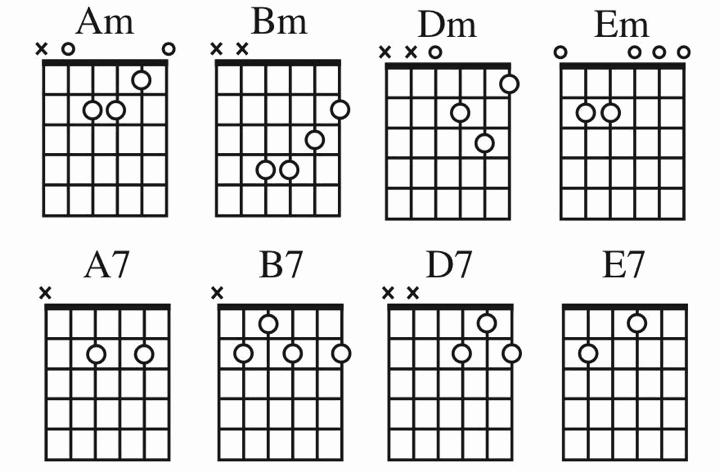
A very common and frustrating problem beginning guitar students face is not being able to change chords quickly, fluently and musically. This may be frustrating for you, the guitar teacher, too, when you are not sure about how to solve the problem.
There can be more than one reason why a student may struggle when trying to change chords smoothly. So the first thing to do when dealing with this challenge is to diagnose why the problem exists. You need to determine if your student has one of the following problems:
- A. A physical coordination problem
- B. He/she has not been practicing
- C. A lack of understanding of what needs to be done
- D. A mental processing problem
Most guitar teachers assume the reason is either A. (a physical coordination problem) or B. (little or no practice). Fact is, most of the time this is wrong. The majority of students actually do attempt to practice. And true physical coordination problems are rare.
For most guitar students almost all guitar playing problems are caused by their brains, not by their hands! This is why many efforts to help them may not work well.
As I mentioned before, there can many reasons why a student is struggling with this (or any other issue) so it is not possible to give a one-size-fits-all solution in an article. There are however three powerful guitar teaching tips that can help solve this problem with beginning guitar students.
- Get your students to keep their strumming hand moving in correct rhythm no matter how far behind the fretting hand may be in forming the next chord. In other words, tell your students (when practicing this way) to not allow the strumming hand to wait on the fretting hand! Practicing in this way will solve a lot of other rhythm and timing problems in the future for this student! The student should practice this way about one third of their practice time until the problem is resolved.
- Get your student to not use the strumming hand at all and simply change chords with the fretting hand quickly (rapid fire, one after another). The student should practice this way about a third of the time until the problem is resolved.
- Make your student play a chord he/she needs to master. Tell him/her to grip the strings hard when playing the chord, then to relax totally (without taking fingers away from the strings/chord), then tell the student to squeeze again all fingers at the same time! Then relax.
The goal here is to train his/her brain to make all fingers move and relax together and not one finger at a time (which is how beginning guitar students make chords on their own – big mistake)… Repeat this exercise until the student can do it well.
Next, have the student move fingers off the strings but maintain the basic chord shape while hovering over the strings…. Then press down on the strings and make the chord… repeat this many times and then gradually move further and further away from the strings before making the chord again. Eventually from an open hand the student should be able to form the chord easily… but in each case you must be sure all fingers are moving and relaxing at the same time, not one finger at a time! The student should practice this way about a third of the time until the problem is resolved.
Notice that these solutions of the problem are all ‘physical’, but they are designed to overcome the student’s “mental processing problem” because the student has not learned to separate and isolate each motion. The beginning guitar student’s brain is overloaded with too much information to apply at the same time, this is why we work on method #1 and #2 above to free the brain from too much processing at once. The last method (#3) is designed in order to break the student’s mental processing habit of sending separate and linear messages to each finger of the hand. What we want is to train the brain to process and send one message to all fingers involved.
To get more help on teaching guitar and building a successful guitar teaching business, check out these fifteen free guitar teaching tips.
About the author: Tom Hess is a highly successful guitar teacher, professional touring guitarist and recording artist. He coaches other guitar teachers on how to teach guitar.